Lenses and Optics
Cine Lens Teardown Comparison: Zeiss 85mm CP.2 T2.1 and Rokinon Xeen 85mm T1.5
I was pretty excited when I first heard about the Rokinon Xeen line of Cinema lenses. For several years now, Samyang / Rokinon photography lenses have given photographers with reasonable expectations some superb alternatives. They sell optically excellent lenses at amazingly low prices. There are compromises made to accomplish this goal, of course, but they are reasonable compromises. You can complain about copy-to-copy variation, or that they are more fragile, but the simple reality is you get a quality optic at a price that is a fraction of the lenses they compete with.
My expectation for the Xeen line would be similar to the photographic lenses. I expect the optics will be excellent, but inevitably some compromises would have to be made to reach the price point at which these lenses sell. I assume they will be smart compromises and cinematographers with reasonable expectations will be able to expand their equipment list.
I’ll admit I have a little bit of fear, though. Photographers tend to treat lenses like, well, glass. They consider them a big investment and baby them. Cinematographers are a lot rougher on their equipment. So one of the first things I wanted to do was look inside and see how these things were built. Since Zeiss CP.2 lenses have a long history as a (relatively) low cost yet very durable cinema lens, we decided to use a CP.2 as a comparison. Since it’s the ‘standard’ we’ll look at it first.

- Xeen 85mm T.15 (left) and Zeiss 85mm CP.2 (right) Lensrentals.com, 2015
Zeiss 85mm cp.2 Teardown
The first step with opening this lens is removing the front light baffle, which comes off easily with a spanner wrench.
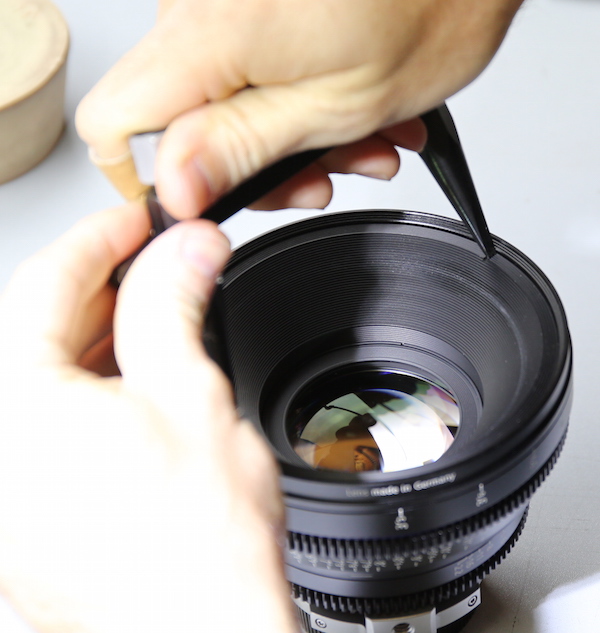
- Lensrentals.com, 2015

- Lensrentals.com, 2015
With that removed we can see the front group which is held in by 4 fairly large screws (they’re down in the slot and not visible in this photo).
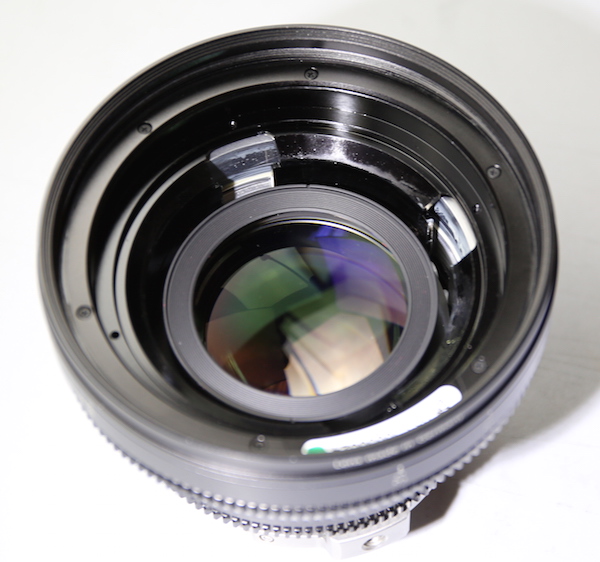
- Lensrentals.com, 2015
The front removes easily, but I’ll warn those of you who are following along at home, disassembling their own CP.2: this is a centering element and if you don’t have the equipment needed to recenter it then leave it alone. If you do have the equipment needed, then the entire front group comes out in one piece. This is all of the glass in front of the aperture.

- Lensrentals.com, 2015
Now we can look into the front barrel down to the aperture. Aaron’s forceps are near two nylon rollers on an adjustable tensioner. These help keep the resistance of the focus ring smooth and steady.
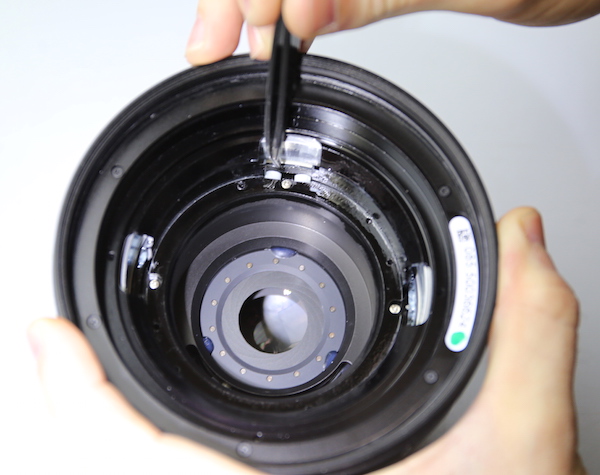
Lensrentals.com, 2015
Next we peel off the double rubber and nylon rings that serve as a dust / weatherproofing seal.
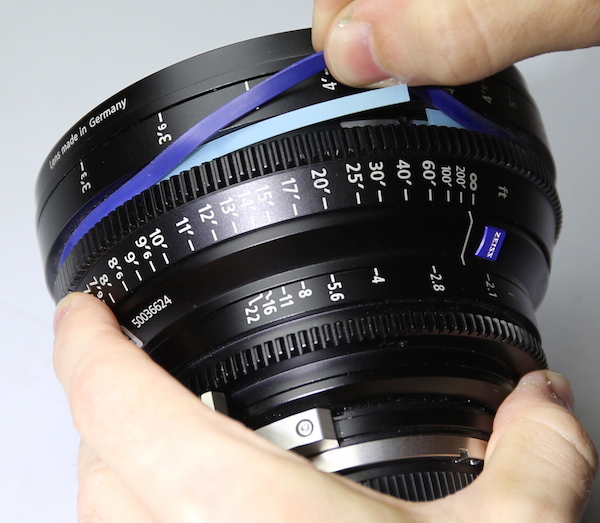
- Lensrentals.com, 2015
Giving us access to the screws we need to take off the focus ring.
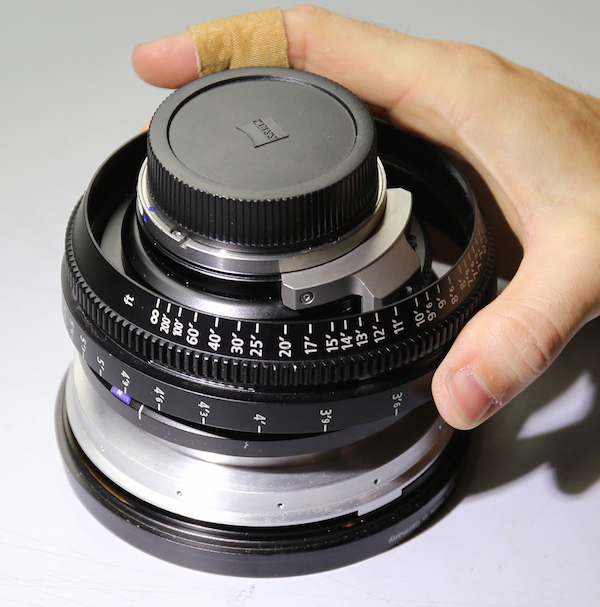
- Lensrentals.com, 2015
You can now see the hard stop for the focus system (red arrow) that gives you that satisfying, clear ‘thunk’ when you’ve focused to the end of the range.
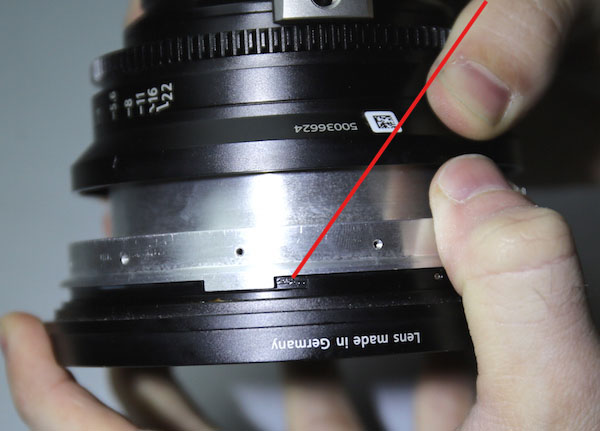
- Lensrentals.com, 2015
Now we change to a torx driver and flip things over to remove the rear bayonet mount.
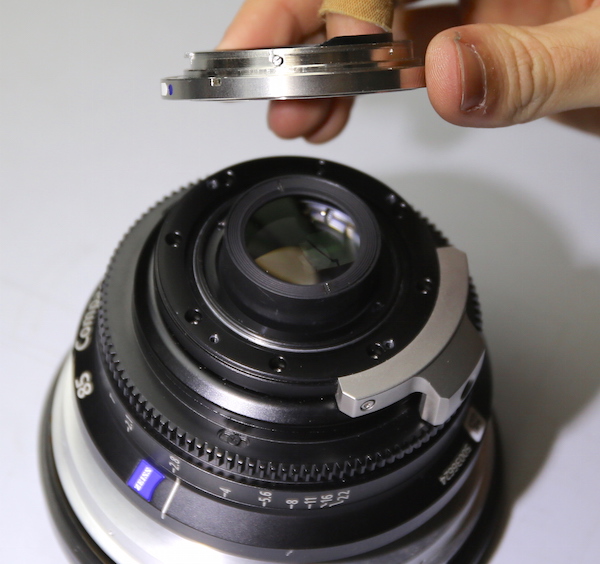
Lensrentals.com, 2015
After which we to remove the lens mount.
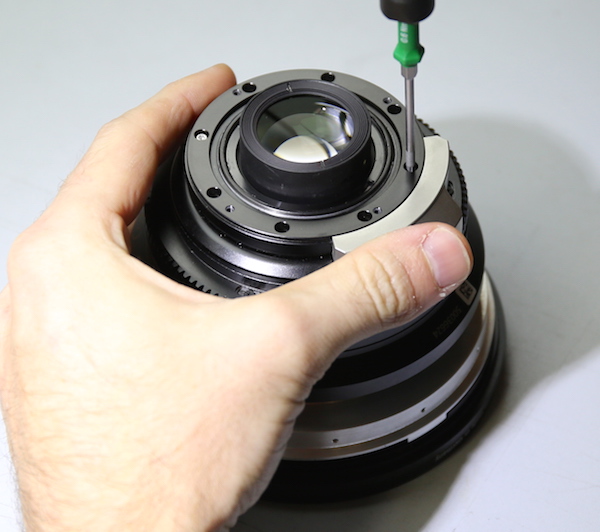
- Lensrentals.com, 2015
Notice there are 6 long, thick, screws (we’ve left them in the mount, you can see them sticking out below it) holding the lens mount in place. Cinema lenses are made to a standard of robustness you just don’t see in photo lenses. The copper rings under the lens mount are the shims to adjust infinity focus.
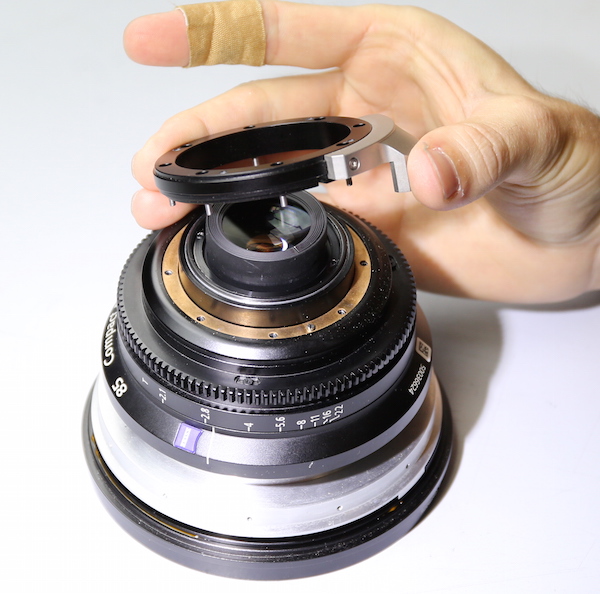
- Lensrentals.com, 2015
Next we loosen the spanner ring holding the rear element in place.
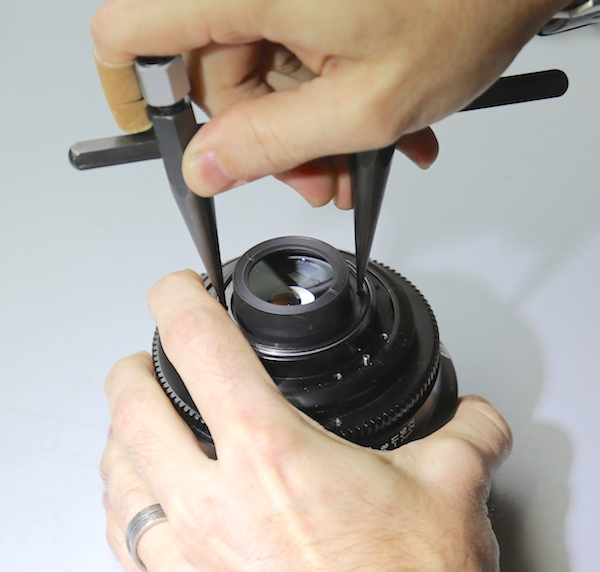
- Lensrentals.com, 2015
And then remove the rear optical group. Notice the white dot on the side of the group. Zeiss marks each group that way so that you know exactly how it should be aligned during reassembly. Which means, actually, that they checked to see at which rotational position the elements were a ‘best fit’ for each other.
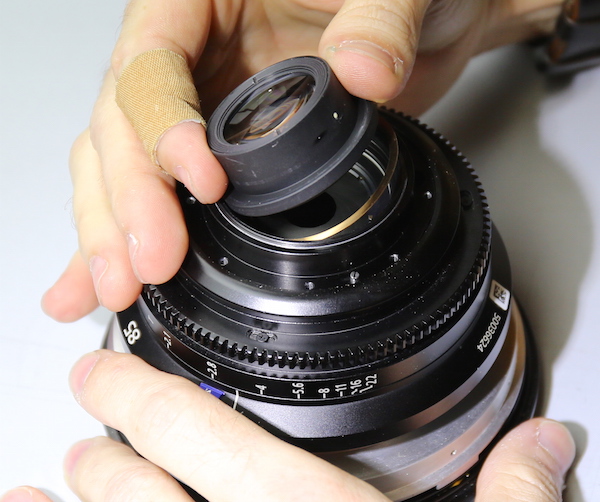
- Lensrentals.com, 2015
Back on the outside of the barrel, there’s a retaining ring that unscrews.
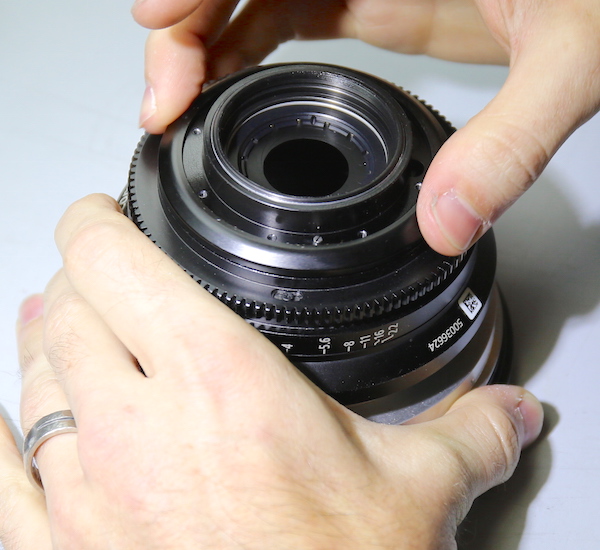
- Lensrentals.com, 2015
Now we have access to the screws holding the aperture key in place.
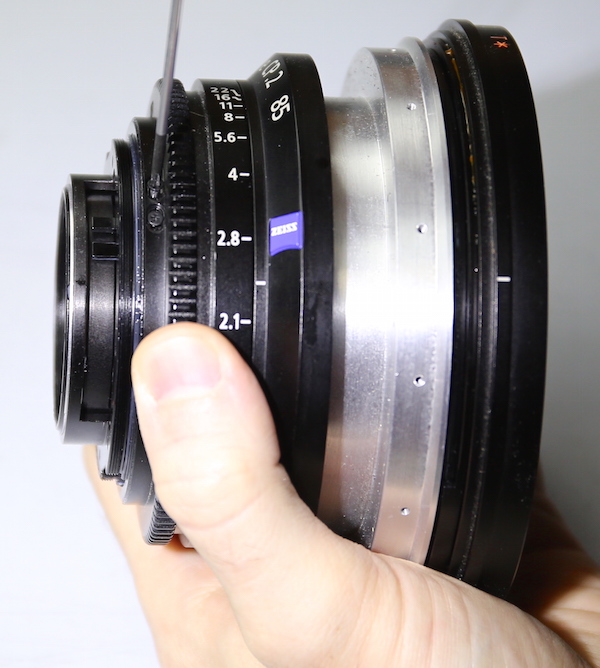
- Lensrentals.com, 2015
Allowing us to remove the aperture control ring. Notice the copious amounts of thick lubricant under every ring. You can see the lighter white lubricant on the barrel itself.
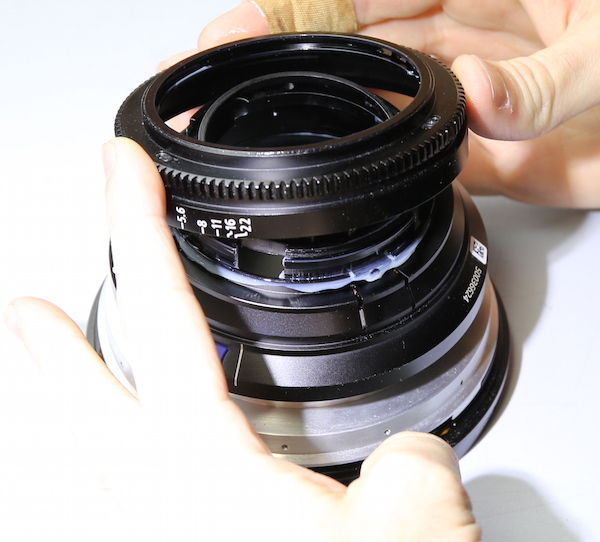
- Lensrentals.com, 2015
And a thicker grease on the bottom of the ring.
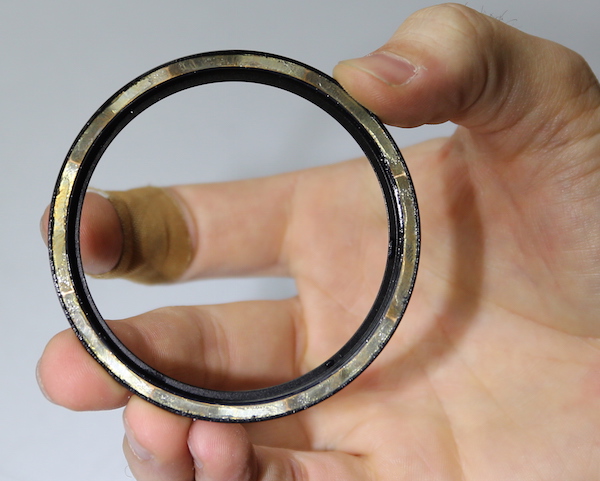
- Lensrentals.com, 2015
The aperture key (shown below) is a heavy, thick metal piece and also heavily lubricated.

Lensrentals.com, 2015
Finally, we go back inside the barrel and remove the aperture assembly.
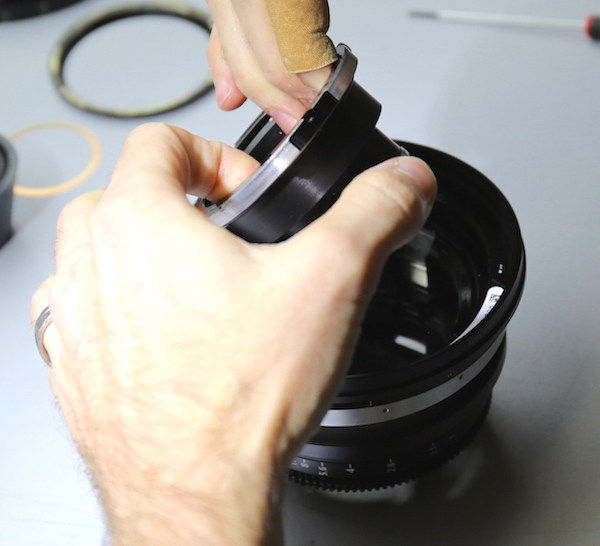
- Lensrentals.com, 2015

- Lensrentals.com, 2015
With the disassembly complete, there’s not a huge number of parts. With no electronics, things are simpler. But the parts are big, robust pieces of metal from one end to the other.
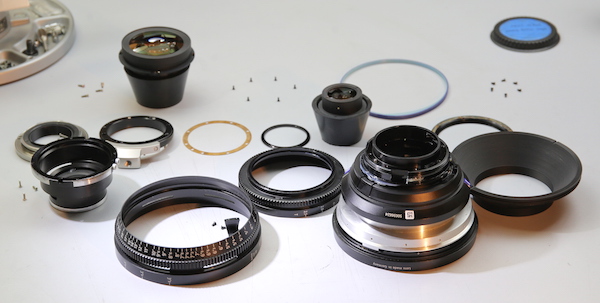
- Lensrentals.com, 2015
Finally, just because someone is going to ask if the lens is OK after we put it back together, once it was reassembled, it got placed on OLAF, our adjustment bench.
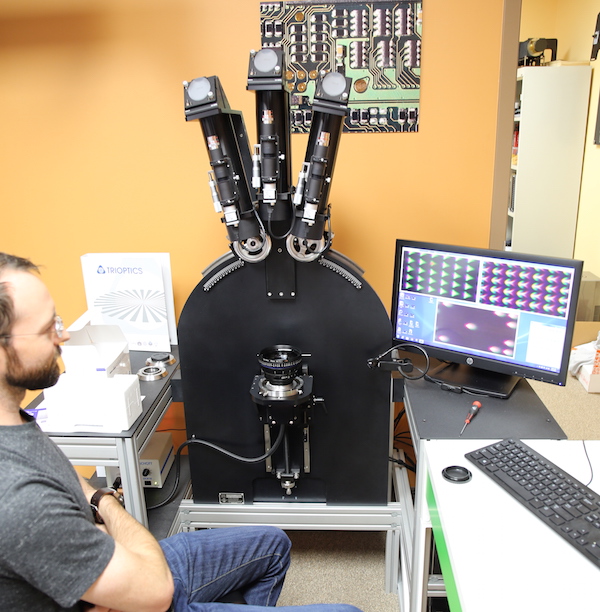
- Lensrentals.com, 2015
For you do-it-yourselfers, this is what the pinholes looked like with the lens reassembled and the front element ‘eyeball’ centered.
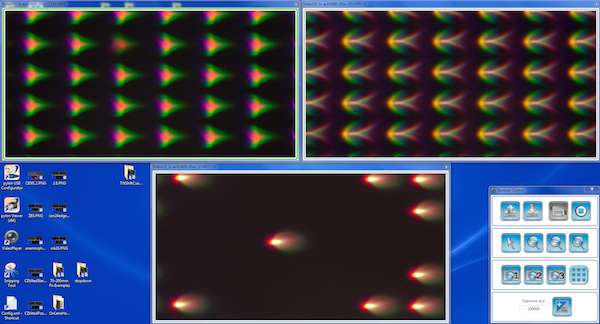
And this after being optically centered.
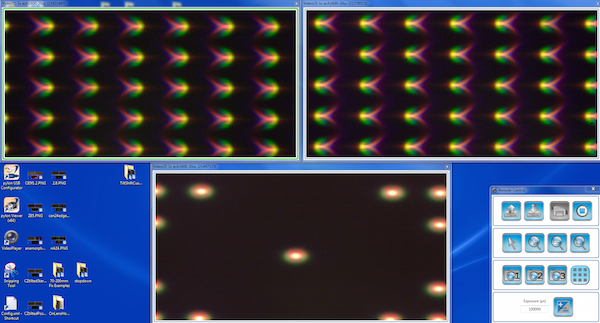
Xeen 85mm T1.5
We have a lot of questions about the Xeen lenses, but the one we’re interested in today is “How is it built?”. Is it going to work as smoothly and easily as a Cine lens should? Does it seem likely to hold up reliably? Only time and use will tell on the latter question, but a good look inside will give us some strong hints.
Before we start, let me get one thing out of the way. A lot of reviewers are going to say the Xeens are “built like a tank” without ever looking inside them. That just means they’re made of metal and heavy. It has nothing to do with how the working parts are made — those are all inside where you can’t see them.
But the Xeen lenses are not only made of metal, they focus quite smoothly and the feel is very good in your hands. As far as external inspection, feel, and usability goes they’re quite good.
Since I know a lot of video guys hate reading, I’ll give you the TL; DR version now. These lenses are well made. Considering the price, they’re very well made. But they have an Achilles heel that’s going to cause a problem eventually, I suspect.
For those of you who do want to read and look at pictures, let’s get started! Opening these lenses starts of quite similarly to the CP.2 we did earlier. The front light baffle comes off easily with a spanner wrench.
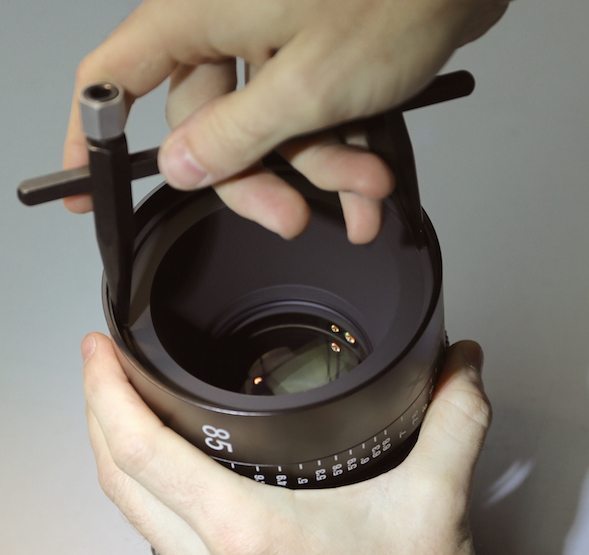
- Lensrentals.com, 2015
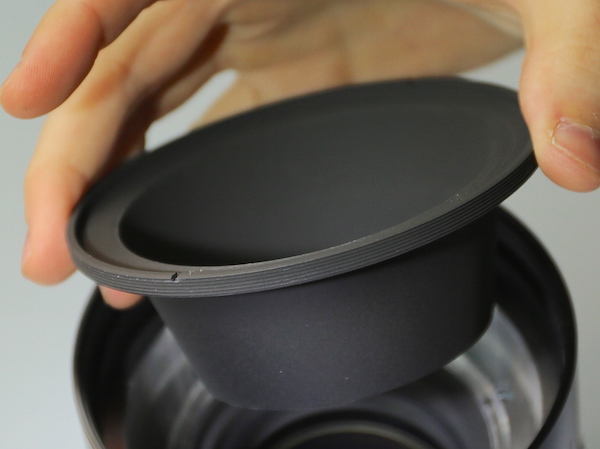
- Lensrentals.com, 2015
With the light baffle (which is a nice, solid piece of metal) out of the way, the inner front barrel is exposed. There are two sets of screws here. The inner ones hold the front barrel onto the lens. The outer set (red arrow) hold the focus ring on.
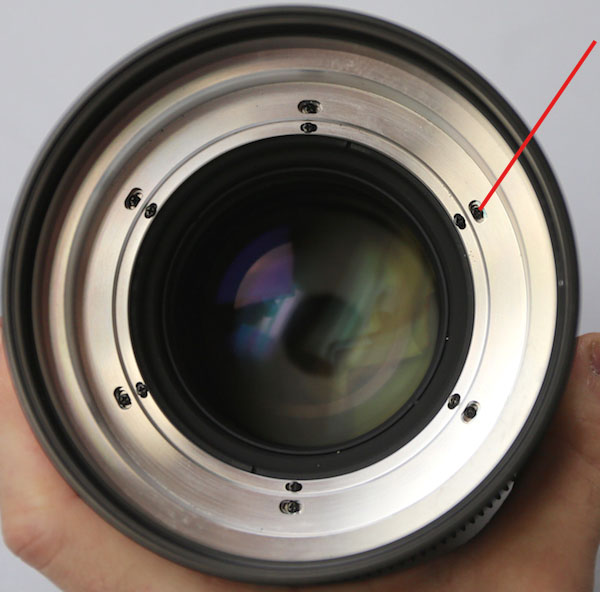
- Lensrentals.com, 2015
Removing the inner screws lets us remove the front barrel.
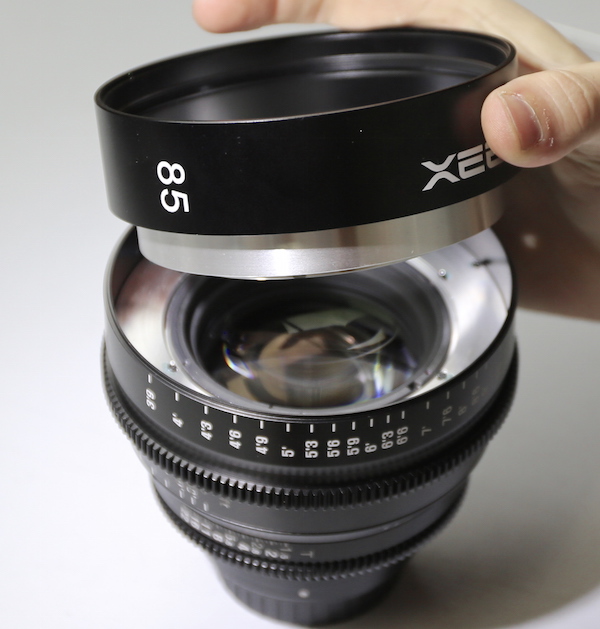
- Lensrentals.com, 2015
The front barrel is, again, all-metal construction and feels very solid. It’s actually in two pieces attached together by six screws. This is a nice touch – if the lens gets dropped the filter barrel will be easy to replace.
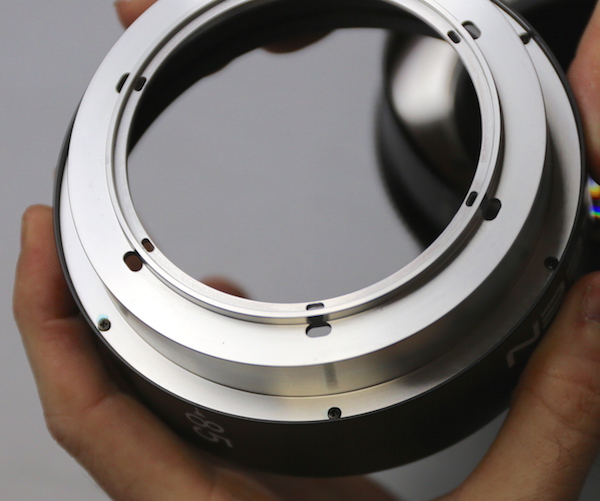
- Lensrentals.com, 2015
With the front barrel off we can see the spanner slots (red arrow) for the front group.
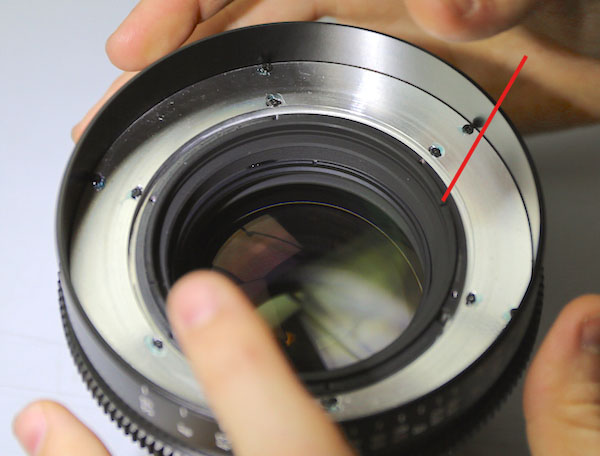
Lensrentals.com, 2015
The front group is easily removed. The group appears to be a simple stack with screw-on front and rear caps holding everything together. We saw no purpose in pulling it apart.
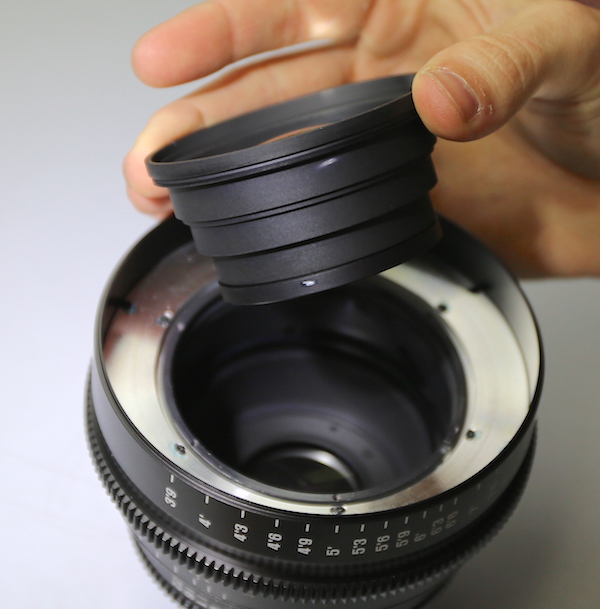
- Lensrentals.com, 2015
Looking down into the front barrel, we can see that, unlike the Zeiss 85mm, there is another element between the front group and the aperture assembly.
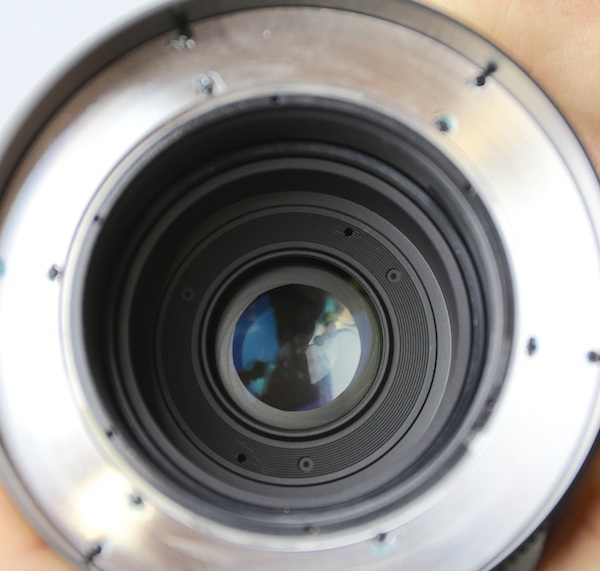
- Lensrentals.com, 2015
This doesn’t look difficult to remove, but we didn’t think we’d learn anything by taking it out so we left it alone and moved to the rear of the lens. The bayonet mount comes off with the usual 4 screws.
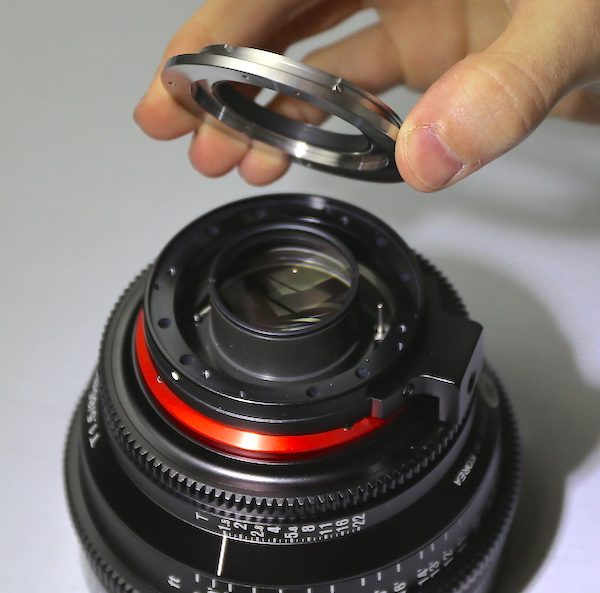
- Lensrentals.com, 2015
With the bayonet off we get a good look at the internal aperture mechanism. Where the Zeiss used some very robust keys to connect the aperture ring to the actual mechanism and heavy lube to keep a smooth turn (scroll up if you want to compare), the Xeen uses a post and counter spring to accomplish the same thing. Not quite as robust but I still think it should function perfectly well. It’s similar to what we see in Nikon photography lenses and those work just fine.
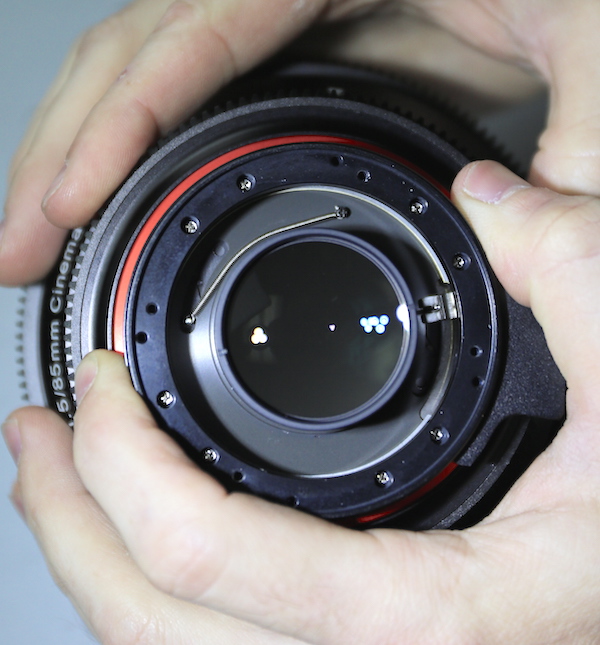
- Lensrentals.com, 2015
The lens mount itself is a thick piece of metal attached with 6 long sturdy screws. This is the same thing we saw in the Zeiss CP.2 and other cinema lenses.
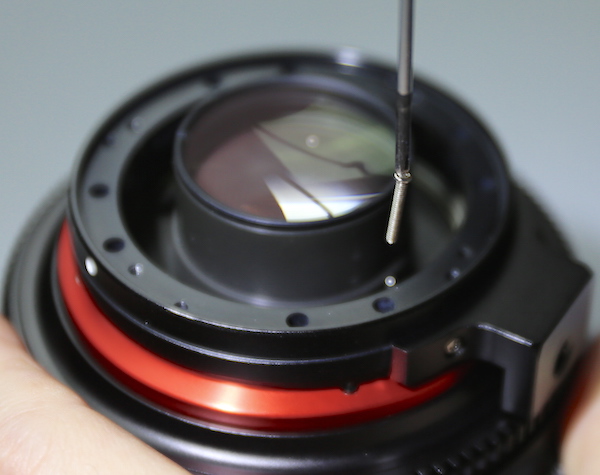
- Lensrentals.com, 2015
Under the lens mount you can see the silver shims used to set infinity focus, just like most other cinema lenses.
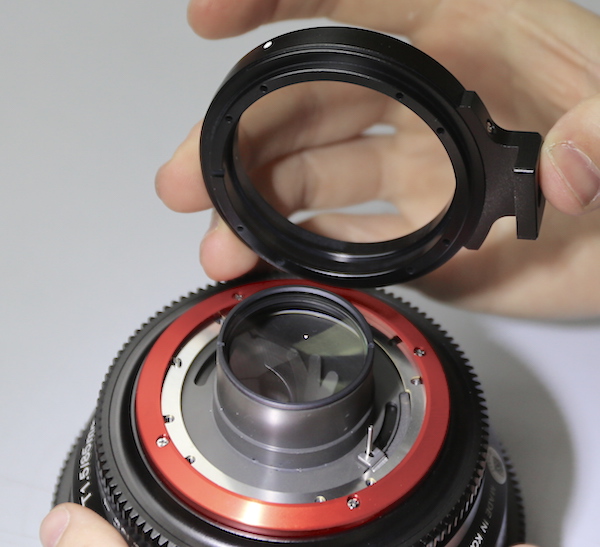
Lensrentals.com, 2015
And here’s a close up of the aperture post nestled in the fork of the aperture key.
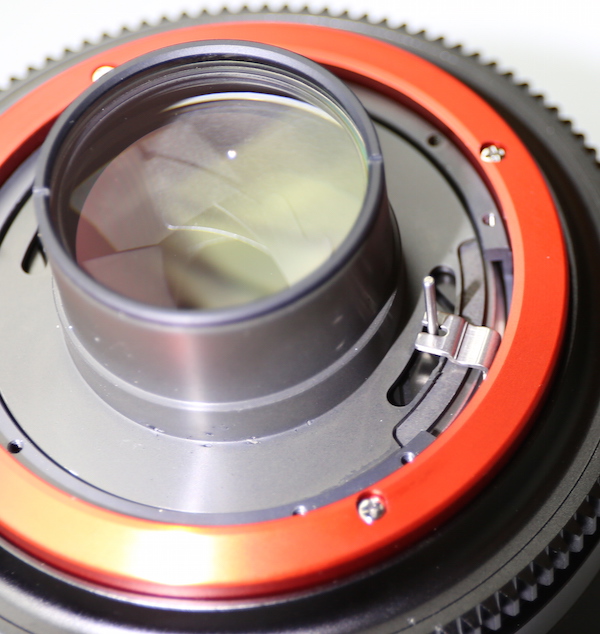
- Lensrentals.com, 2015
Removing the orange ring lets us see the hard aperture stops (green arrows) under the ring. Again this looks quite sturdy and similar to what we see in most cinema lenses.
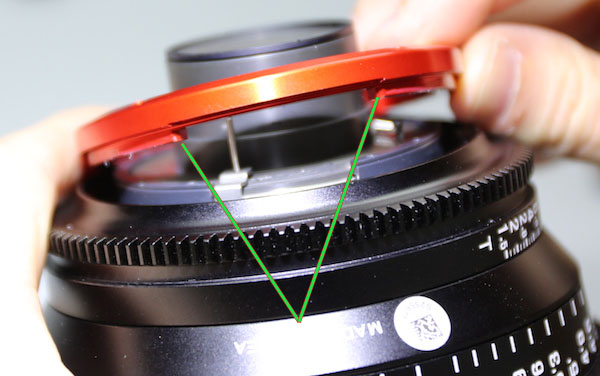
Lensrentals.com, 2015
With this ring removed, the aperture ring slides right off the lens.
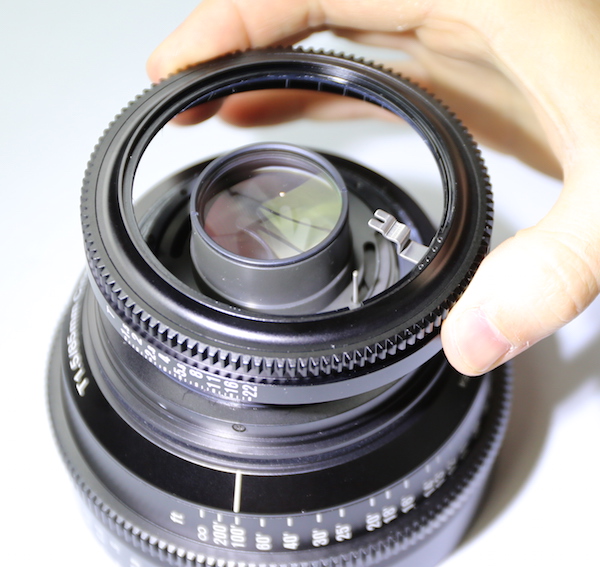
Lensrentals.com, 2015
Looking underneath the aperture ring gives us another look at the key, solidly held in place with 4 screws.
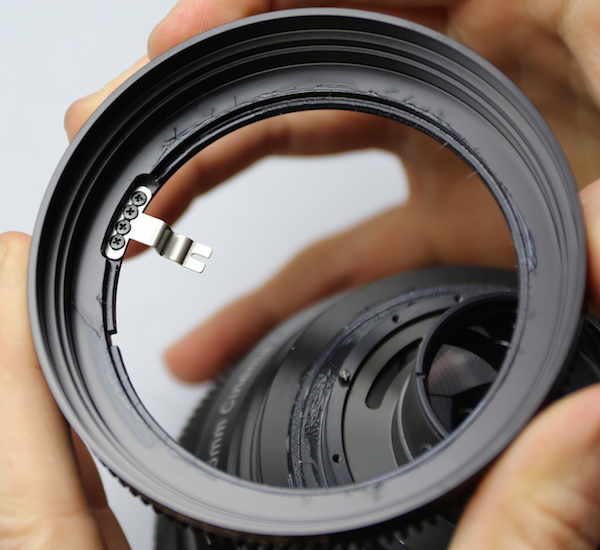
Lensrentals.com, 2015
We next removed a set of 4 screws that hold the mid barrel in place, after which we could slide the mid barrel off.
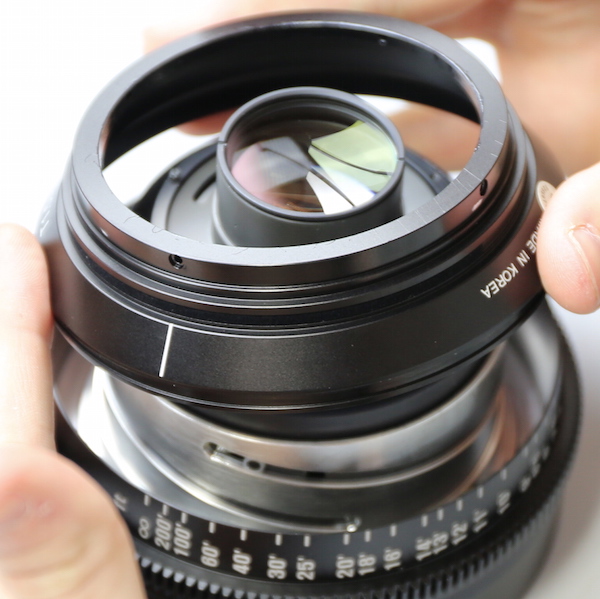
- Lensrentals.com, 2015
Which gave us a good look at the focusing helicoid. The helicoid barrel (silver barrel) and helicoids themselves are very solid looking. The collars (green arrow) that slide within the helicoids, moving the focusing groups, made me pause, though. These are pretty thin, more like what we’d expect in a Samyang photo lens. with the longer throw of a cinema focusing helicoid they’re going to get more wear than with a photo lens. I was a little concerned about how they would hold up when we first saw them.
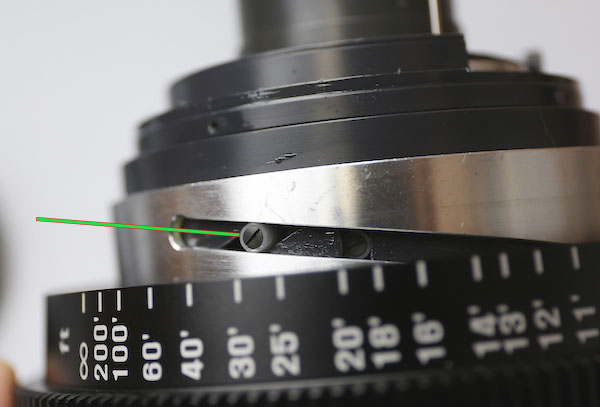
- Lensrentals.com, 2015
So we removed one to get a closer look. My concerns were not relieved. In addition to the collars being thin, there are only about 2.5 turns of screw thread holding the collar into the lens element.

- Lensrentals.com, 2015
And the screws themselves aren’t too robust. It may be that I’m wrong and these screws and collars are going to hold up very well. But if I’m correct, when these lenses are a year or two old, we’ll be seeing a fair amount of focus roughness from worn collars or focus jams when screws come loose. Hopefully I’m wrong. And if not it should be an easy repair, assuming repairs are available.

- Lensrentals.com, 2015
Finally, we removed the external focus ring. It attaches to the focusing barrel (which is silver) by those 6 screws we saw when we were working in the front.
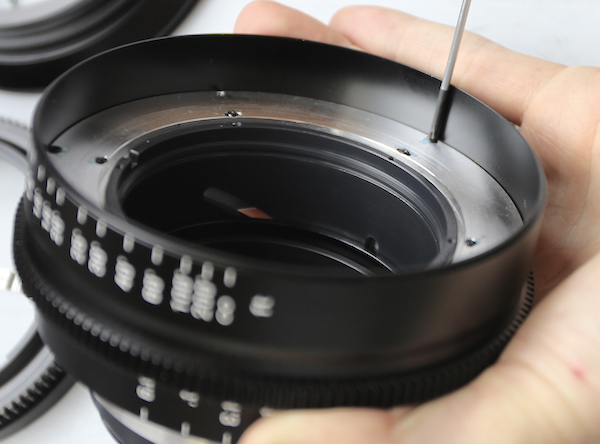
Lensrentals.com, 2015
Once those are out, the focus ring slides off the back of the lens. The screws take the place of any focus key and they certainly is never going to break. This is a solid way to do things.
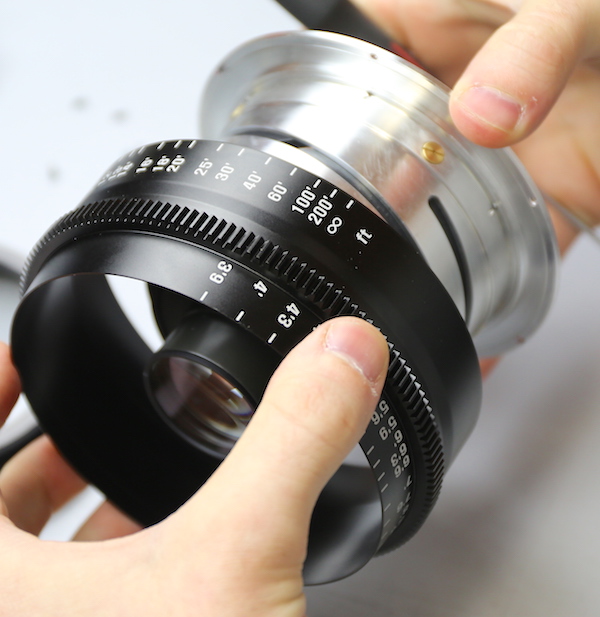
- Lensrentals.com, 2015
We were interested in the brass screws at the top of the barrel, since it seemed simple screws would have attached things just as well. They’re pretty and all, but this isn’t a place anyone would see them.
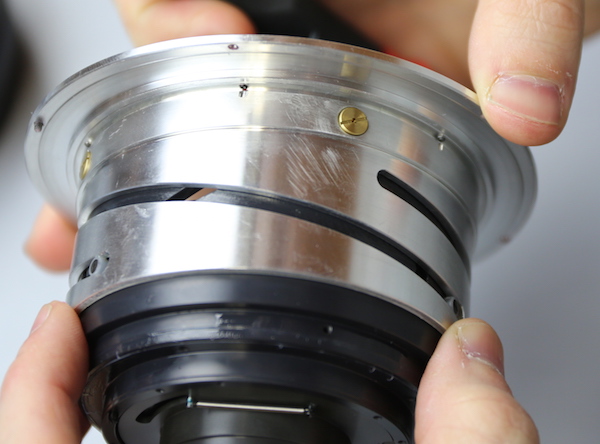
- Lensrentals.com, 2015
When we took one out we were pleasantly surprised to see there nylon bushings on the back side. The thick screws and bushings keeps the focus ring moving along smoothly. It’s a nice touch. It occurs to me that perhaps this also takes some load off of the helicoid collars we talked about earlier. I hope so anyway.
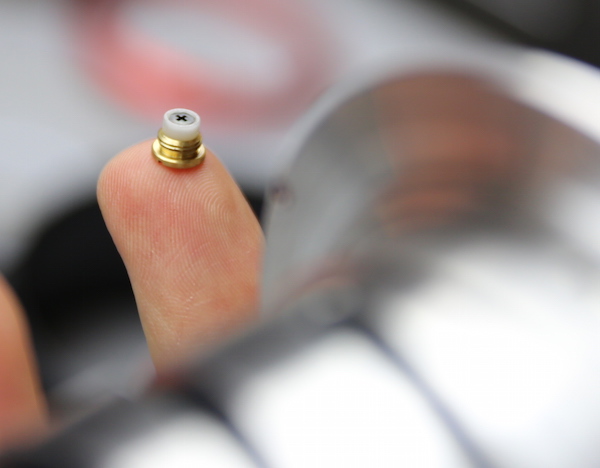
- Lensrentals.com, 2015
One last thing to look at and it’s kind of hard to see. But looking under the focus barrel you can see the hard stop for focus is a set screw (red arrow). It slides under a thinner area of the barrel during focusing, but when the limit is reached the thicker part of the barrel (green arrow) hits the screw, giving a hard stop.
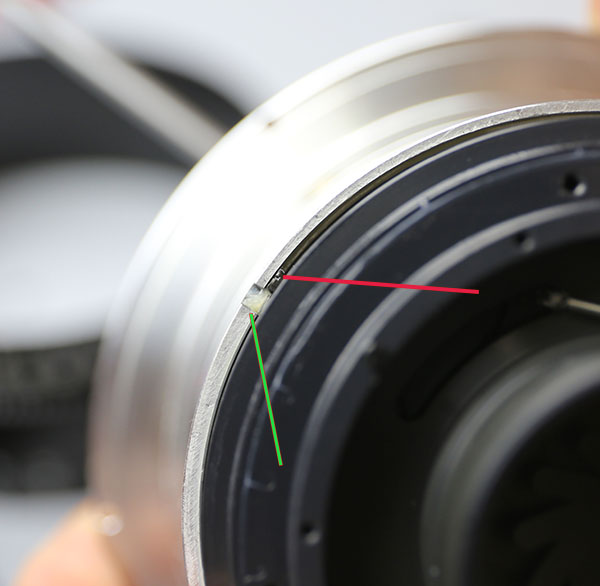
- Lensrentals.com, 2015
Does it work? Yes, quite well. Will it hold up? Well, I have my concerns. Screw heads are made of soft metal usually. Hopefully this is a special screw with a really hard metal head that won’t wear down with repeatedly hitting the stop. But I’d prefer a solid big metal-on-big metal stop like the Zeiss had.
So what’s the verdict on build quality? Overall, it’s very good, especially given that it’s selling for about half of what other cinema lenses sell for. I do have some very real concerns about how the focus system will hold up over time and with hard use, but the compromises made seem very reasonable overall. Put another way, I wouldn’t hesitate to buy one based on what I saw today, but I’d be make sure my focus puller was gentle and didn’t ‘slam’ focus. Over time hard use, especially hard focusing use, will take a toll on this lens I think.
One other thing I’ll mention is that we didn’t see any possible optical adjustment in these lenses. There may be spacing shims inside the front or rear groups. We didn’t open those to check. So I’ll be interested to see what the copy-to-copy variation is like. But the optical results will have to wait until tomorrow when we can get these on the optical bench.
Roger Cicala and Aaron Closz
Lensrentals.com
August, 2015
Author: Roger Cicala
I’m Roger and I am the founder of Lensrentals.com. Hailed as one of the optic nerds here, I enjoy shooting collimated light through 30X microscope objectives in my spare time. When I do take real pictures I like using something different: a Medium format, or Pentax K1, or a Sony RX1R.
-
Martin Mikitas
-
Omesh Singh
-
Roger Cicala
-
Bertus Kirsten
-
Colin Elves
-
Gery Teague
-
Gery Teague
-
Omesh
-
!Olivier
-
!Olivier
-
Jojo
-
Casey Preston
-
Alex
-
Jonas
-
Achim Kostrzewa
-
The D. Man
-
Allen Achterberg
-
mrc4nl
-
Scott
-
Scott
-
Jon Wolding
-
Jeff Cowan
